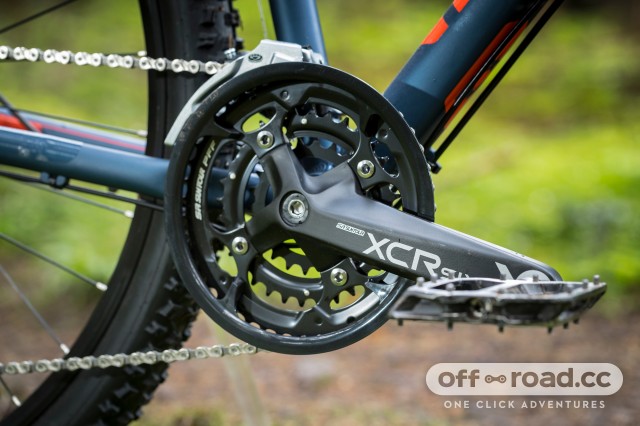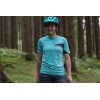The Things I Wish I Had Known.....

Picking up a new sport is hard and we are rarely blessed with all the information we need to get going in a way that ensures a seamless and hassle free transition into our new hobby. Certainly, for me I've had experiences, that had I bought a certain item or sought some advice, would have saved me a lot of pain, time and effort, not to mention money!
There is always time for learning and I regularly find myself meeting with new people who share their tips to success whether that be bike set problems, clothing niggles or skill improvements. Here are the things I wish I had known when I started out in the world of cycling, use the information as you will.....
No Pants
Firstly no pants under your lycra. Had I known that lyrca with a chamois pad is your pant replacement when riding and this is totally socially acceptable I could have saved myself a great deal of chaffing. You'll have heard that wearing a chamois pad is akin to wearing a nappy when riding but it doesn't have to be that way. There are plenty of slim chamois pads which offer just as much comfort as the plusher, squisher ones with a lot less bulk. Less is usually more and it's definitely quality over quantity - don't skimp!
Chamois Cream Up
Using chamois cream is akin to the icing on the cake, smooth it on and the more the better! Of course, I didn't find out about chamois cream until after I had learned about the 'no pants' thing for obvious reasons. Chamois cream is applied to the skin and/or the chamois pad to prevent friction and rubbing when cycling. The first application and subsequent pull up of your lycra shorts will no doubt leave you with a wrinkled look of disgust as the cold cream comes into contact with warm skin, it's not pleasant, but thankfully the only necessary evil in the whole process.
Chamois cream and chamois pad together are a match made in heaven for your bottom, I even keep a spare mini tub of chamois cream in my pack for emergency use - it might just get you to the end of a ride intact.....
Use a single chainring
Embrace a 1x drivetrain as soon as possible. I started riding a fair few years ago whilst triple chain rings were still in full swing. I spent a lot of my time in the early days umming and erring about the new fad that just uses one chainring up front. I then spent a lot more time buying parts and taking my bike to and from the bike shop to slowly change my set up from 3 x 9 to 2 x 10 and eventually to 1 x 10. It was a long drawn out process that saw me take months to make the full move to a 1x setup, finding no good or common ground at the halfway point of 2 x 10.
You'd have thought I'd have just made the mistake once too, but no, I made it twice. Later whilst building a Kinesis FF29 up as an XC racer I specified 2 x 10 on that bike too, first race into a season and I experienced chain suck so bad I gouged a not insignificant amount of material from my chainstay, leaving not only a hole in my frame but one in my heart too as I realised the consequence of my error. Needless to say, that bike was taken promptly to my local bike shop and was adorned with a brand new 1x 11 set up. I've never looked back, it's simpler, quieter, there is plenty of range and your chain doesn't drop off at every given moment with the ferocity of my favourite drum and bass artist dropping the beat.
Drop the nose
Push your saddle forward and drop the nose of it slightly to gain the most effective climbing position. For all out there who, like me, want to winch up climbs and then plummet back down then you should give this tip a go. To make the most of your effective seat angle and put your saddle in the most efficient place for climbing, slide it forward in the rails to where it is marked max and drop the nose slightly, just by 10 degrees or so. Doing this opens your hips and places you in the best position to put the power down. Positioning the saddle further forward in the rails and making the most of the effective seat angle you have will move you into a more central position taking weight away from the rear axle and helping to weight the front of the bike, stopping it lifting whilst climbing. A quick explanation of effective seat angles and a demonstration of the adjustment to you saddle is here in this video, give it a watch, try it out and let me know what you think below....
Ride flats at the start
I'm not sure why, but when I started riding, I clipped in immediately and I've been a SPD fan ever since. In my first few years of riding you'd have never had seen me on a pair of flat pedals. A few years in and as I started to jump and slide about in muddy conditions I realised there might be a benefit to riding flats, little did I know I'd missed out entirely on the skills that riding in flats in the early days would have bought to me. I vividly remember donning a pair of trainers and after fixing a pair of cheap flatties to my bike, going out to the woods to give them a whirl, after all, how hard could it be? I was home shortly after with my tail between my legs and a fair chunk of flesh missing from my shin after a drop off gone hideously wrong. You guessed it, my early days of riding a SPD's had formed me into a rider with little to no weight in her feet, heels that rose up at every given opportunity and no idea about weighting and unweighting the bike. Effectively I'd cheated my way through being a beginner rider and now real life was here to hit me in the face and teach me how to do things properly. As a result for a few months each winter, I take myself along to the flat pedal classroom and switch myself back to flats, whatever bike I'm riding.
Don't Apologise
We all started somewhere, usually, in the world of cycling it is from the beginning, slowly and painfully unless you've lived another life as a talented motocross rider (of which there is a fair few of those around!) It can be fairly daunting to get out and about on social rides where everyone seems to be better, faster and more steezy than you but these kinds of rides will help your riding improve in leaps and bounds.
Remembering that everyone on bikes around you started somewhere is key to enjoying a group ride, secondly; don't apologise if you feel slow or seem to be keeping others waiting, no one will mind. They've all been in your position before and seeing as the sport of mountain biking is about as friendly as a sport gets, I bet they don't mind either. It took me a bit of practice to stop the "sorry for keeping you waiting" from popping out of my mouth at the bottom of a trail and turn it into a "thanks for waiting" or a "great, I'm ready to go", but in doing so, subliminally I've changed my perception of myself, I can feel the confidence boost internally and my riding has improved too.
The internet is a huge access point for information, let us know in the comments below any tips or hints you have for beginner riders and maybe we can do a sequel to this piece!













